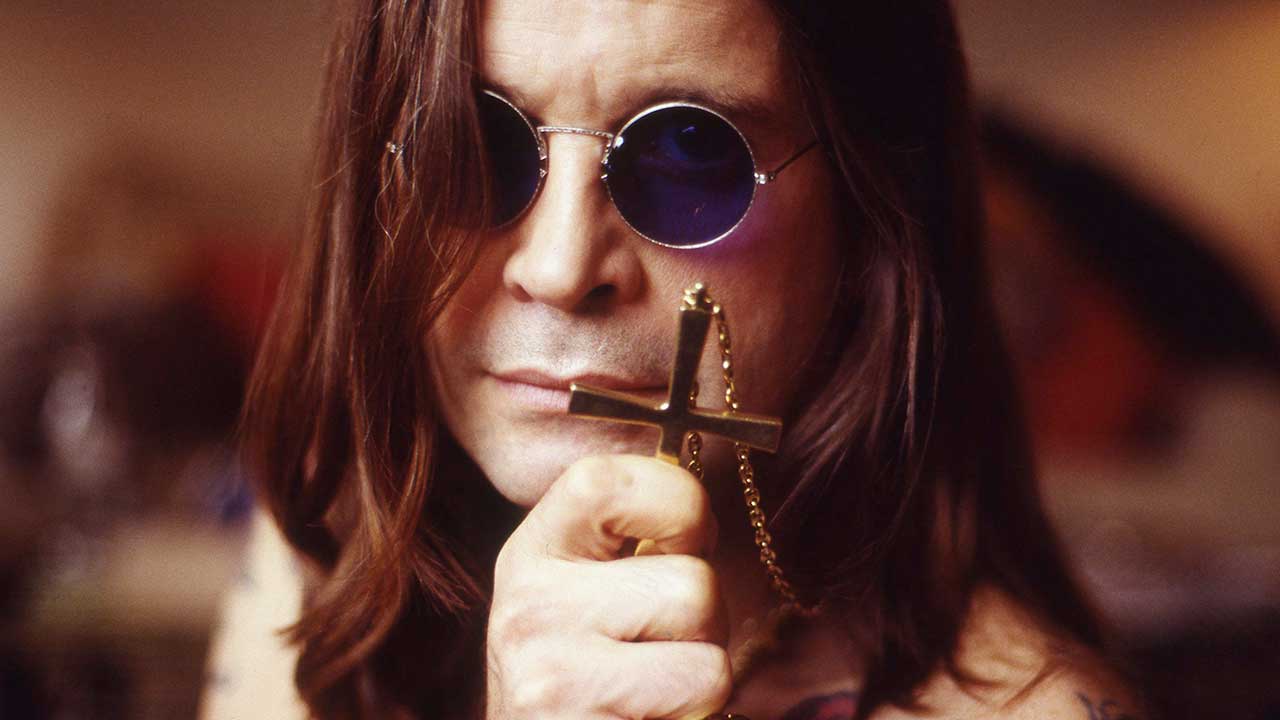In 1980 Ozzy Osbourne released Suicide Solution, a song that (contrary to the thoughts of ill-informed conservative Christians) warned of the perils of drinking yourself to death. A little under a decade later he was in serious danger of suffering that fate himself.
In a decade defined largely by excess and hedonism, Ozzy had gone off the rails in a big way. Stories of his misadventures made tabloid headlines (cultivating a legend around the rock’n’roll madman), but the reality was decidedly less glamorous. By his own admission (in his autobiography I Am Ozzy), he “wasn’t the bat-biting, Alamo-pissing, Crazy Train-singing rock’n’roll hero”, so much as someone who couldn’t drink without soiling himself, blacking out or upsetting his family. And then on September 3, 1989 he tried to murder his wife Sharon.
Shortly after returning from the Moscow Peace Music Festival, Ozzy attacked Sharon in a drugs-and-drink-induced haze, strangling her until he was subdued and ultimately carted away to a prison cell. After coming to his senses he had no recollection of the incident, but was mortified to learn just how close he had come to killing the love of his life. Sharon ultimately dropped the charges, but she made it clear: the booze had to go.

Ozzy began the 90s in rehab, planning to kick his alcoholism and reconnect with a family he had terrorised and neglected the previous decade. He was also looking to tone up. Not just physically, but also in a musical sense, and put in the effort to make sure his sixth solo record would put him back atop of the heavy metal tree.
For all the darkness that had precipitated it, the recording for No More Tears was surprisingly smooth – and fun. Pranks abounded in the studio as the Ozzy Osbourne band got back together; Ozzy became fond of letting off stink-bombs while the other members were playing (“You could use them to clear fuckin’ buildings, not rooms!” guitarist Zakk Wylde remembers).
In retaliation, Wylde and drummer Randy Castillo staged a dirty protest, hiding faeces in Ozzy’s room (including in a Tupperware box in the fridge) to give the singer a (literal) taste of his own medicine. If there were any reservations after the tumultuous preceding 18 months, they didn’t show.
“For me it was just getting ready for the next season,” Wylde says. “Whatever happened, it was just time to train and whup some ass again. I’m just the guy doing the job, I don’t worry about flying the plane.”
Envisioned as a more ‘mature’ Ozzy Osbourne record, No More Tears truly came together in the studio as producers John Purdell and Duane Baron helped pull together arrangements and ensure that every song on it had anthemic potential. As Ozzy said in his biography: “We [had] to treat every single like it could be a hit single.”
Lyrically, the album dispenses with the campy kitsch of earlier solo releases, and instead struck a balance between heartfelt epiphanies and sinister undertones. Opener Mr. Tinkertrain dealt with paedophilia, while the album’s title track (and lead single) concerned a serial killer.
It was the emotional candour of Mama, I’m Coming Home, the album’s second single, that most seemed to capture the growth in Ozzy’s artistry, however. All the more impressive considering it was actually written by fellow rock icon Lemmy (who ended up writing four tracks on the record – “Earning more than [I] did in 15 years in Motorhead!” Lemmy recalled in his own autobiography White Line Fever).
By the time Mama I’m Coming Home was released in March 1992, the rock world was changing rapidly in the face of a new breed of alternative rock. But while many of his 80s stadium-rocking peers were raked over the coals, Ozzy achieved new commercial highs when Mama became the only solo Ozzy Osbourne single to break the Top 40 in the US (it still is today).
It also proved somewhat prophetic, foreshadowing Ozzy’s decision to step back from the constant touring that had dominated his life in the 80s. Mistakenly diagnosed with MS, he embarked on a retirement run with the (not quite) aptly named No More Tours.
The tightest and most colossal sounding Ozzy Osbourne record since 1983’s Bark At The Moon, No More Tears showed that Ozzy wasn’t going to be buried by the changing tides. In time it also became the watermark by which all future Ozzy albums were measured by – right up to 2020’s Ordinary Man.
“I love hearing ‘the best Ozzy album since No More Tears,’” Duane Baron admits. “Because that’s what we were trying to do – make an Ozzy Osbourne album for the nineties.”

